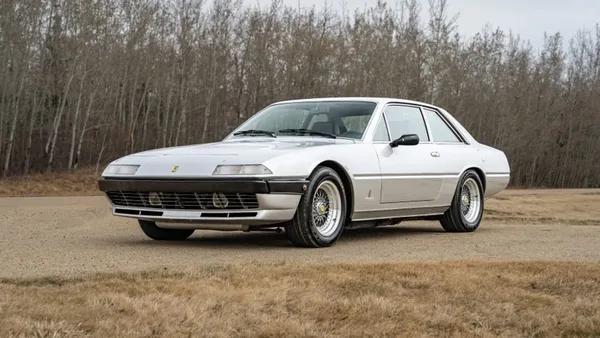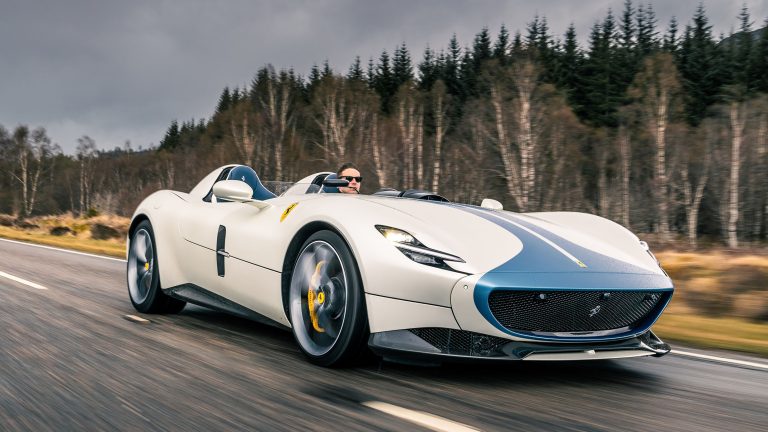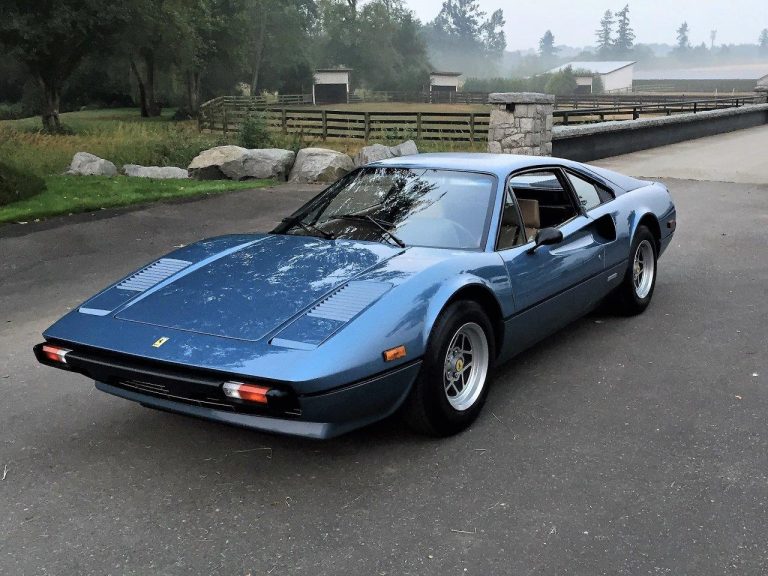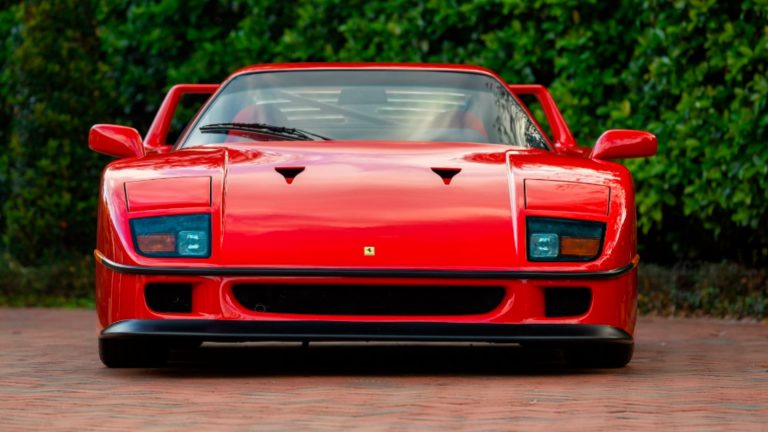Ferrari 250 GTO: Specs, Price, HP And Performance
Imagine the thrill of sitting behind the wheel of a machine that’s both a masterpiece of design and a marvel of engineering. That’s the Ferrari 250 GT, a classic car that’s as renowned for its performance as it is for its elegance. Nicknamed the ‘Long Wheelbase Berlinetta’, this beauty was a force to be reckoned with in the prestigious 10-day Tour de France Automobile race.
Brought to life by Carrozzeria Scaglietti, the Ferrari 250 GT was built for speed and power. It’s not just about the sleek exterior; under the hood lies an engine that started at 237 horsepower, eventually reaching a staggering 256 horsepower. But that’s just the tip of the iceberg when it comes to this iconic car. Let’s get ready as we take a closer look at the Ferrari 250 GT – its price, top speed, specs, and engine.
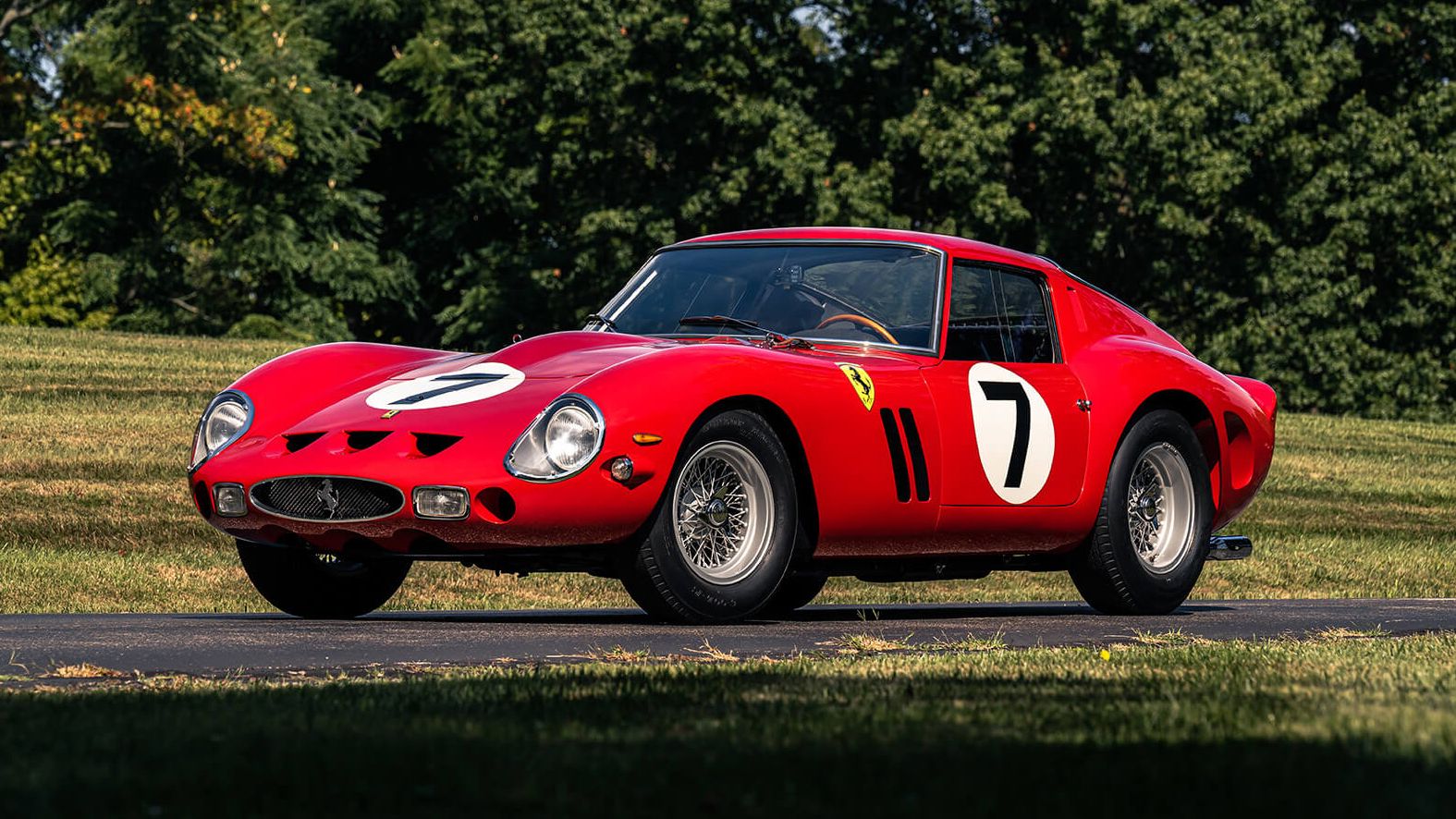
A Complete Ferrari 250 GTO Review
Ferrari 250 GTO is a legendary machine, and driving one is an experience reserved for a lucky few. Here’s a look at the 250 GTO from various angles:
1. Ferrari 250 GTO Design
The Ferrari 250 GTO is a timeless classic admired as much for its stunning design as its historical significance. Here’s a closer look at both the exterior and interior:
Exterior
The Ferrari 250 GTO’s exterior is a masterpiece sculpted by Pininfarina, the legendary Italian design house. The curvaceous bodywork is a perfect blend of elegance and aggression, characterized by:
- Low-slung nose:This design element contributed to the car’s exceptional aerodynamics for its era.
- Long, sweeping hood: The long hood housed the powerful V12 engine.
- Flowing fenders: The fenders integrated seamlessly with the rest of the body, creating a smooth and cohesive design.
- Pop-up headlights: A signature feature of many classic sports cars, the pop-up headlights added a touch of drama to the GTO’s look.
- Short rear deck: The short rear deck accentuated the car’s sporty character.
- Four round taillights: The taillights were a simple yet effective design element that became synonymous with the GTO.
- Spoked wheels: The classic Borrani wire wheels added a touch of vintage sophistication.
Interior
The Ferrari 250 GTO’s interior was designed with a focus on functionality and driver experience. While minimalist by modern standards, it exudes a certain charm:

- Lightweight materials: The interior made extensive use of lightweight materials like aluminum to minimize weight.
- Bucket seats: The car came with low-profile bucket seats that provided excellent support during high-speed driving.
- Wood-rimmed steering wheel: The wood-rimmed steering wheel added a touch of luxury to the otherwise spartan interior.
- Minimal gauges: The dashboard featured only the essential gauges needed for the driver, such as speedometer, tachometer, and oil pressure gauge.
- Central shifter: The unique, centrally located gear shifter was a hallmark of the GTO’s design.
2. Ferrari 250 GTO Performance
The Ferrari 250 GTO’s performance, while not mind-blowing by today’s supercar standards, was phenomenal for its era and a big part of its racing success. Here’s a breakdown:
Engine:
The heart of the beast was a Colombo-designed V12 engine. There were two main variants:
- 3.0L V12: This was the initial engine, producing around 300 horsepower at a screaming 7,500 rpm.
- 4.0L V12: Introduced later, this larger engine offered a bit more power, but wasn’t as prevalent.
Horsepower:
As mentioned, the 250 GTO’s horsepower was around 300 hp for the 3.0L version, which might seem ordinary today. However, for the early 1960s, this was a significant amount of power, placing the GTO at the forefront of performance.
Acceleration:
Acceleration figures for the 250 GTO are estimated due to a lack of official records from the era. However, sources suggest it could do 0-60 mph in a blistering sub-6 seconds, which was exceptionally quick for its time.
Top Speed:
The Ferrari 250 GTO was capable of reaching a top speed of around 174 mph (280 km/h). Again, this was highly impressive for a car built in the early 1960s and solidified its dominance on the racetrack.
3. Ferrari 250 GTO Price
The Ferrari 250 GTO stands as one of the most expensive and coveted cars in the world. Due to its incredible rarity, historical significance, and iconic status among collectors, the value of a 250 GTO has consistently risen, reaching record-breaking figures at auctions.
Historical and Recent Sales
- Historical Pricing: When new in the early 1960s, the 250 GTO sold for about $18,000, which was a significant price at the time. However, its value in the collector’s market has skyrocketed since then.
- Recent Auction Records: In recent years, the Ferrari 250 GTO has broken records in the classic car market. For instance, in 2018, a 1963 Ferrari 250 GTO reportedly sold for $70 million in a private sale. Additionally, another 250 GTO was auctioned for $48 million in the same year at an RM Sotheby’s auction, making it the most expensive car ever sold at auction at that time.
4. Technical Specifications of Ferrari 250 GTO
The Ferrari 250 GTO, while not boasting the most extreme numbers, was a technical marvel for its time. Here’s a detailed breakdown of its key specifications:
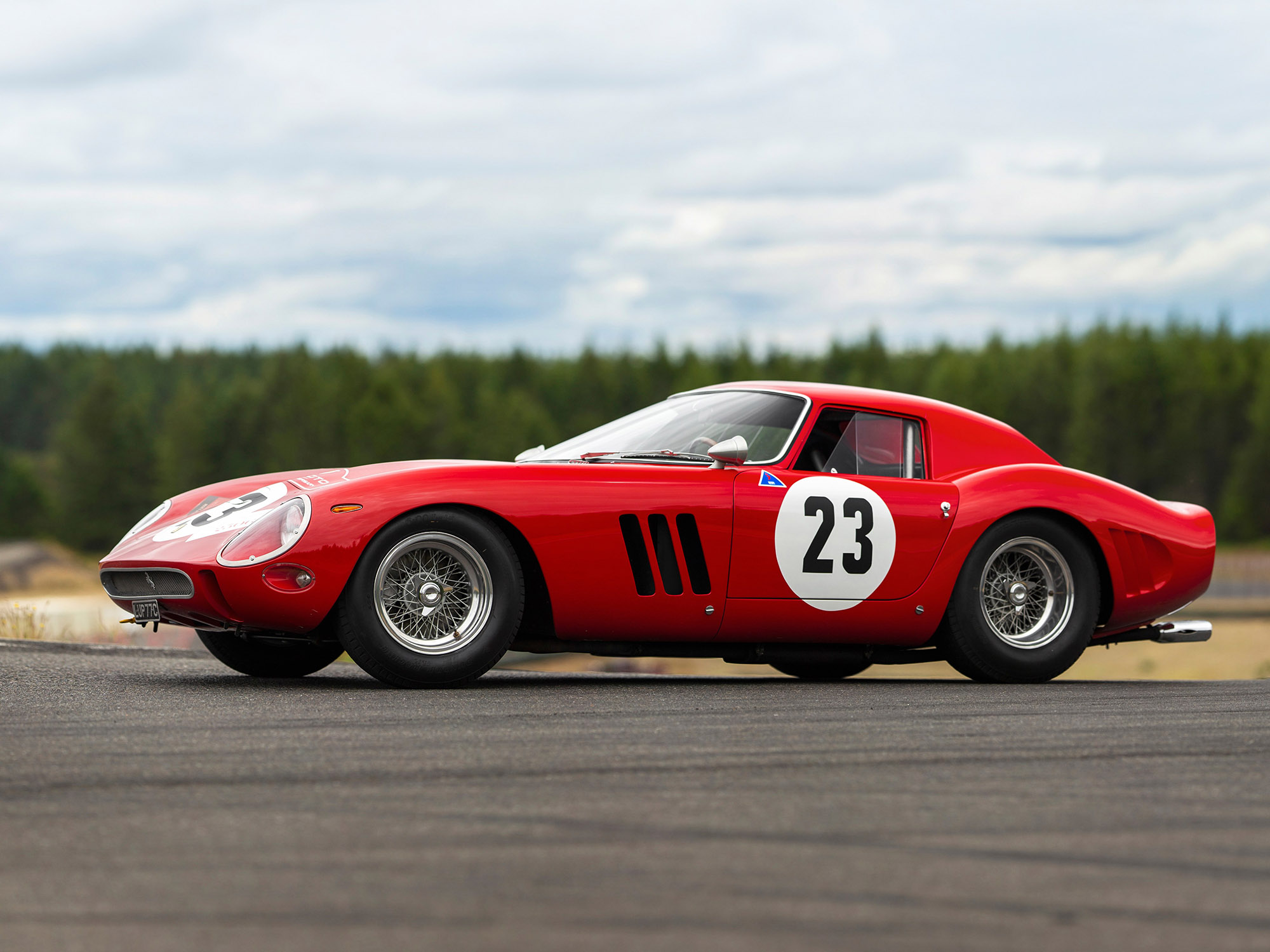
Engine:
- Type: Front-mounted, longitudinal 60° V12
- Displacement:
- 2953.21 cc (3.0 L) – Most Common Variant
- 3996.2 cc (4.0 L) – Less Common Later Variant
- Bore x Stroke:
- 73.0 mm x 58.8 mm (3.0 L)
- Valve Actuation: Single overhead camshafts per bank, two valves per cylinder (early version)
- Fuel System: Six Weber 38 DCN carburetors
- Lubrication: Dry sump [1, 2]
Performance:
- Maximum Power:
- Around 300 hp (221 kW) @ 7400 rpm (3.0 L)
- Higher output for the 4.0 L variant (exact figures vary)
- Maximum Torque:
- Around 294 Nm (217 lb-ft) @ 5500 rpm (3.0 L)
- Higher torque for the 4.0 L variant (exact figures vary)
- Top Speed: Around 174 mph (280 km/h)
- Acceleration: 0-60 mph in around 6 seconds (estimated)
Drivetrain & Chassis:
- Transmission: 5-speed manual gearbox with Porsche-type synchromesh
- Drive wheels: Rear-wheel drive
- Chassis: Hand-welded oval tube frame
- Suspension:
- Front: A-arm suspension
- Rear: Live axle with Watt’s linkage
- Brakes: Disc brakes
- Wheels: Borrani wire wheels
Dimensions:
- Length: 4325 mm (170.3 in)
- Width: 1600 mm (63.0 in)
- Height: 1210 mm (47.6 in)
- Wheelbase: 2400 mm (94.5 in)
- Weight: Around 880 kg (dry weight)
5. Ferrari 250 GTO Racing Legacy
The 250 GTO was not just a car, it was a champion. It marked its territory on world-renowned tracks and showcased its unrivaled capabilities against the stiffest competition.
The Ferrari 250 GTO in Competitive Racing
The 250 GTO was a beast on the tracks. It made its presence known by claiming victories in legendary motor races. As you look into motor racing history, you cannot help but notice the 250 GTO’s domination in the Tour De France Automobile endurance race. Its reputation soared further when a particular 250 GTO, fondly named ‘Old No. 7’, clinched victory at the 12 Hours of Sebring race. This proven track-streak didn’t stop there. In 1964, the 250 GTO emerged victorious in one of the most prestigious road races of the world, the Targa Florio.
How Ferrari 250 GTO Set Its Racing Records
Setting multiple records didn’t just happen. It was the 250 GTO’s powerful V12 engine, and the sleek aerodynamics that made the difference. The GTO’s engine, designed by Giotto Bizzarrini, was key to the car’s racing dominance, delivering 240PS (237 horsepower) and 265 Nm of torque. The GTO’s aerodynamic body, crafted by Pinin Farina, also contributed significantly to the car’s high-speed performance. With a top speed exceeding 280 km/h (174 mph), it’s obvious that the strategic blend of power, speed, and design in the 250 GTO made it a matchless force in motor racing.
As the year 1964 neared its end, the 250 GTO again flaunted its prowess on one of the toughest circuits in the world, the Nürburgring in Germany. There, it set a new lap record, cementing its place in motor racing history. This impeccable performance and a successive streak of wins have catapulted the 250 GTO into a league of its own. Today, though they no longer race, these cars are seen more as historical relics and are among some of the most expensive cars ever sold at auctions.
6. Pros and Cons of Ferrari 250 GTO
Let’s take a detailed look into the pros and cons of owning a Ferrari 250 GTO. Remember, owning such a legendary car is no small feat, and there’s plenty to consider.
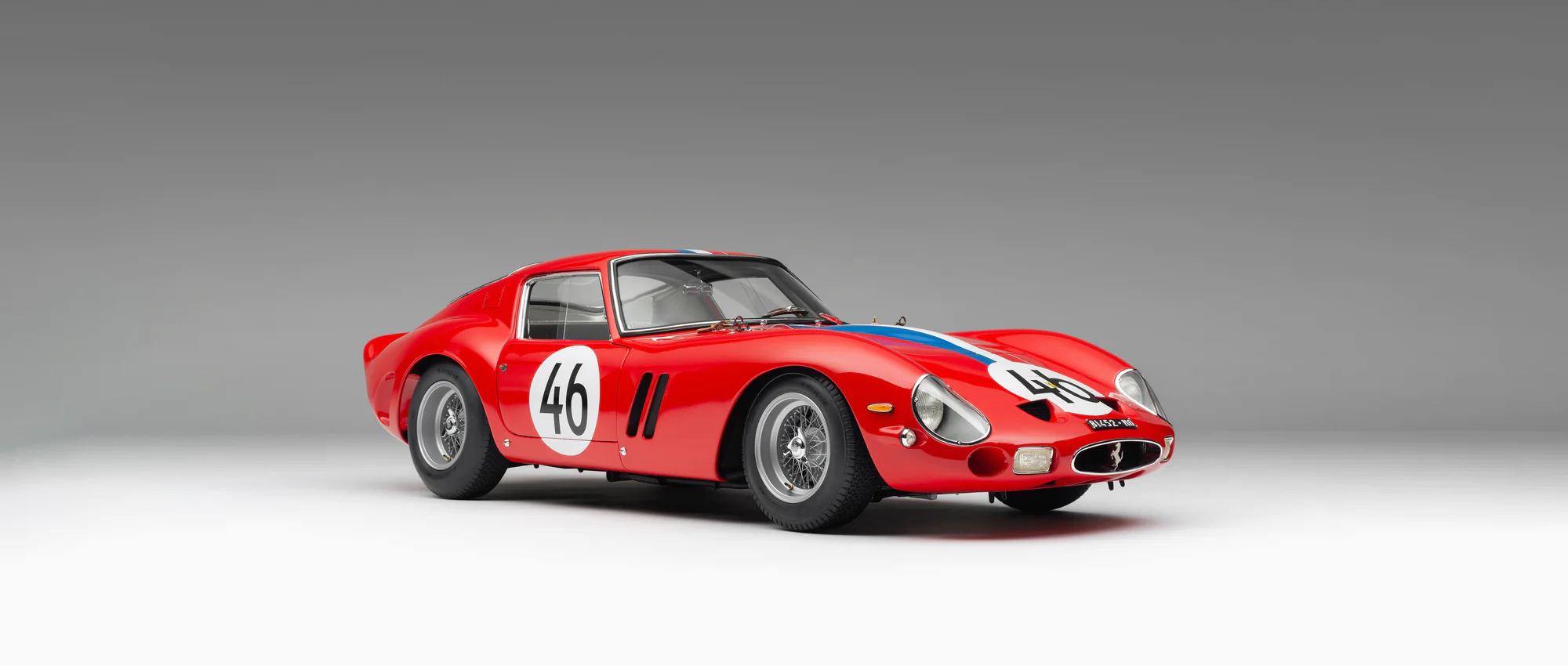
Advantages of Owning a Ferrari 250 GTO
- Historic Significance: The Ferrari 250 GTO carries a legacy rivaled by few, thanks to its heritage in high-profile races like the Tour de France Automobile. This historical significance makes owning 250 GTO a privilege and a unique way to connect with the glamorous past of GT racing.
- Exclusivity: Only 77 Tour de France cars were ever built, and a number were sold for GT races from 1956 through 1959. This makes the 250 GTO one of the most exclusive cars on the planet, adding significantly to its collector’s value.
- Roaring Performance: With an engine that delivers up to 260PS (256hp) and a maximum torque of 265Nm at 5,000 rpm, there’s no shortage of thrill when you’re behind the wheel of a Ferrari 250 GTO. The balance of power, performance and handling truly sets the 250GTO apart.
Disadvantages of Owning a Ferrari 250 GTO
- Price Tag: Its status as the most expensive car globally is a significant barrier to ownership. The 250 GTO has consistently fetched commanding prices at auctions, something you’ll need to consider if you’re thinking about adding one to your collection.
- Limited Utility: The Ferrari 250 GTO is a work of art and a piece of history. Consequently, it’s not really a car for daily drives or long road trips. It’s a high-performance vehicle meant for the track or the show floor, rather than the open road or the school run.
- Maintenance and Upkeep: Classic cars often come with high maintenance costs and finding parts for such a rare and old car can be difficult. Not to mention, the 250 GTO requires specialized care, only enhancing the cost further.
Frequently Asked Questions
1. What engine does the Ferrari 250 GTO possess?
The Ferrari 250 GTO is powered by a race-approved Tipo 168/62 Comp. 3.0 L (2,953 cc) V12 engine. This all-alloy design employs a dry sump and six 38DCN Weber carburetors. It generates approximately 300 PS (296 bhp; 221 kW) at 7500 rpm, providing a torque of 294 N⋅m; 217 lbf⋅ft (30 kg⋅m) at 5500 rpm.
2. What makes the Ferrari 250 GTO so unique?
The Ferrari 250 GTO is renowned not only for its splendid aesthetics but also for its driveability, cordial handling, and sheer passion for the road. It holds the record as Ferrari’s most winning road/racing car, acquiring either a class-first or overall win in almost 300 worldwide races.
3. Who is the owner of the $70 million dollar Ferrari?
David MacNeil, the CEO of WeatherTech, privately purchased the Ferrari chassis number 4153GT, a 1963 model, in 2018. He paid over US$70 million for it and spent an additional considerable sum restoring it back to its 1963 Le Mans look.
4. What factors contribute to the high value of the 250 GTO?
The significant value of the Ferrari 250 GTO is primarily due to its uniqueness. It is one of the few cars fitted with a larger 4.0-litre engine in its time, technically making it a 330 LM, despite having a Tipo 1962 GTO frame. Piloted by Mike Parkes and Willy Mairesse, this engine led to a class win at the Nürburgring 1000 km.
5. Why does the 1962 Ferrari 250 GTO carry a hefty price tag?
The 1962 Ferrari 250 GTO is among the most expensive cars due to its limited production; less than 40 models were produced. Furthermore, prospective buyers had to receive personal approval from Enzo Ferrari himself, adding to its exclusivity.

Hi! I’m Larry Gibbs, studying mechanical engineering with a focus on cars. I really love Ferraris and write blog posts about the latest car stuff. When not studying or blogging, I’m usually on a road trip exploring new places. I also enjoy playing football and watching movies. Life’s an adventure, and I’m all about enjoying the ride!


